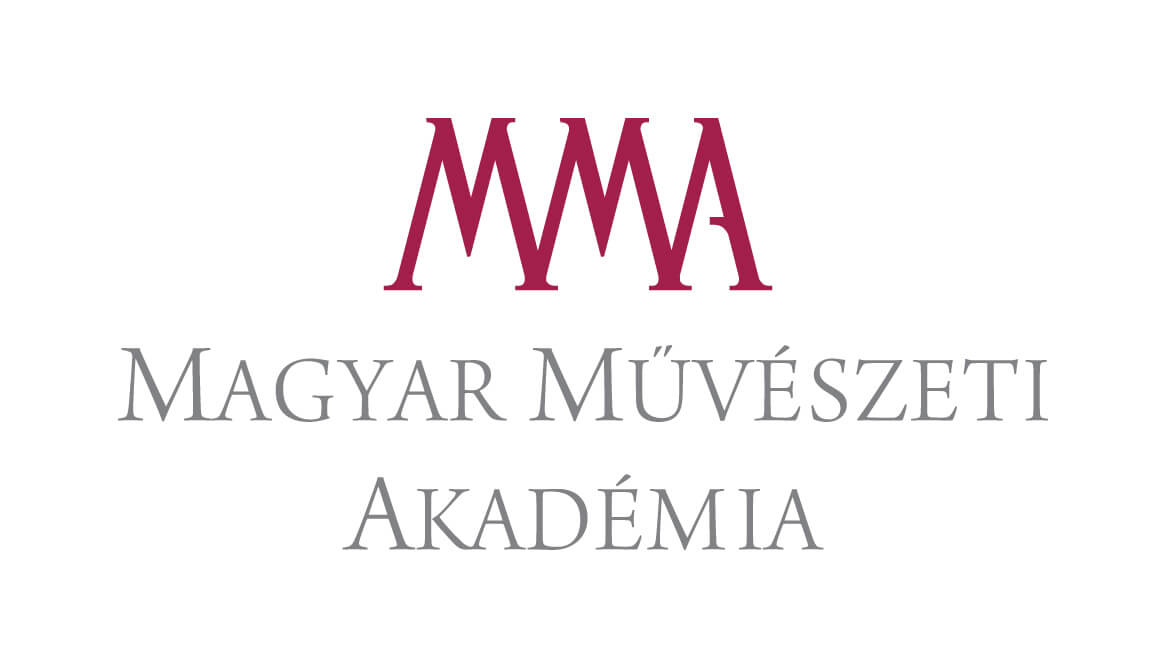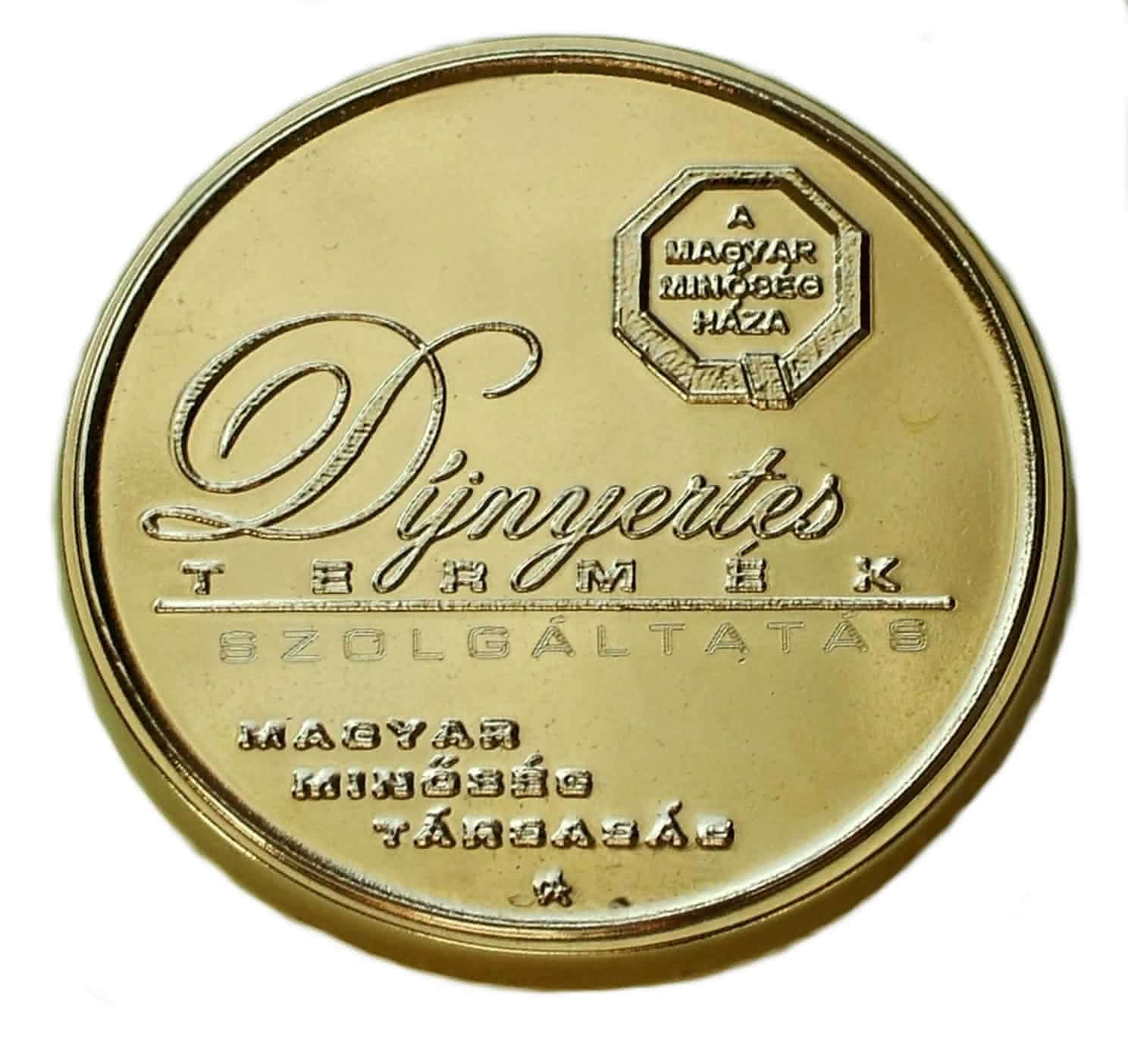
Simonffy Kálmán dupla CD
Simonffy Kálmán dupla CD
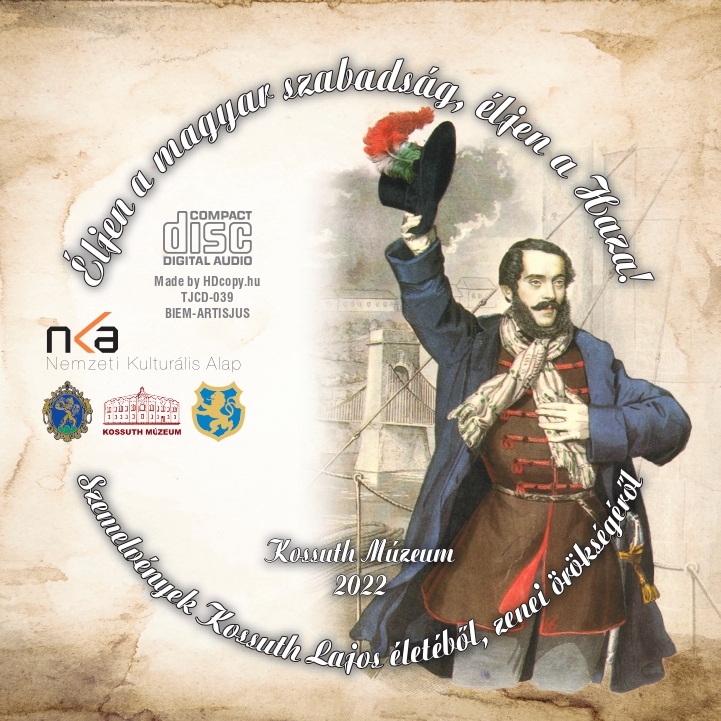
Kossuth CD
Kossuth CD

Dányi népdalok
Dányi népdalok
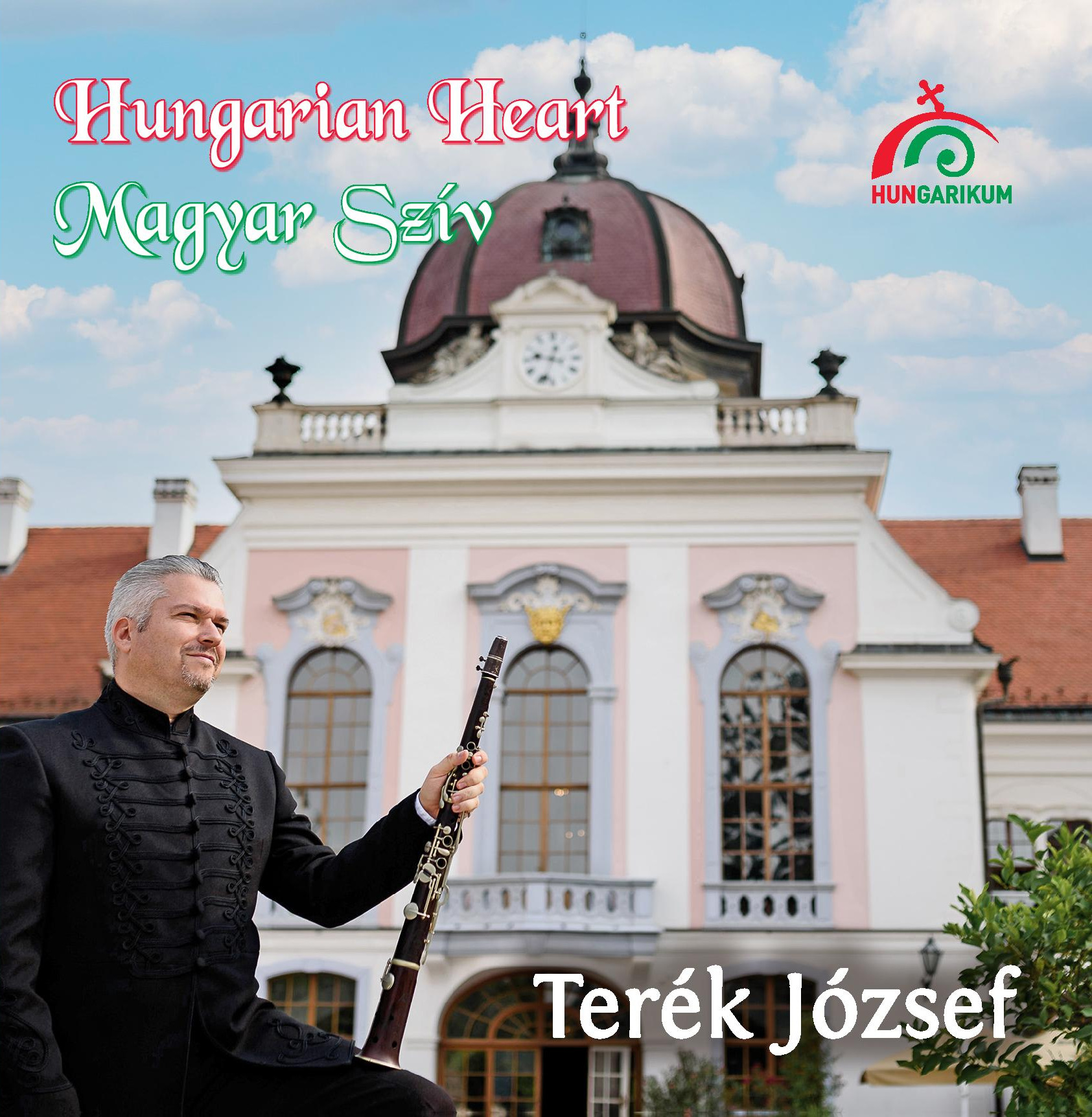
Magyar Szív
Magyar Szív

Tower in Tápióság – How far it can be seen from!
Tower in Tápióság – How far it can be seen from!
(Folk music and folk song CD)
It is the eighth settlement in the region along River Tápió with its own folk music and folk song publication within the framework of the preservation of culture and cultural heritage in the region along River Tápió. Approximately 100 years of folk song research is presented in it, the basis of which was founded by the work of ethnomusicologists – and disciples of Zoltán Kodály – Jenő Ádám and Bálint Sárosi, who conducted researches nationwide. In addition to the tunes and melodies in the old and new styles, tunes of mourning and grief, as well as a very rare form of melody of a ‘peddler’ song are also reflected – together with a large number of archive recordings – in the publication, which presents 13 performers playing the folk songs of Tápióság. Upon publishing this material, the folk song and folk music values of another settlement in the Tápió region could be preserved, which values were previously performed by the local marching bands and the gypsy bands. The piece was published in 2019 by Tápióságért Foundation.
The members of the band and other contributors
- Mrs. Sándor Bíbok née Erzsébet Kun - Archive recordings
- Mrs. Gábor Cserni née Rozália Mészáros (b. 1907) - Archive recordings
- Inoka László (b. 1936) - Archive recordings
- Mrs. István Lesti Jun (b. 1921) - Archive recordings
- István Lesti (b.: 1893) - Archive recordings
- Mrs. Károly Maczó née Jusztina Jusztina (b: 1923) - Archive recordings
- Mrs. Ferenc Minkó, née Sinkó Anna (sz: 1887) - Archive recordings
- Jázmin Mázás – vocals
- Sára Czira – vocals
- Dezider Axmann – zymbal
- Milán Hetényi – vocals
- Éva Sára Horváth – vocals
- Szabolcs Hrúz – fiddle
- Júlia Kubinyi – vocals
- Mihály Pál – vocals
- Éva Sass – vocals
- Vilmos Seres – double bass
- Marcell Péter Szekeres – vocals
- József Terék – zymbal
- Gergely Tóth – viola

Zitherists along River Tápió
Zitherists along River Tápió
The publication on zitherists has a supplementary value as regards the protection of cultural and cultural heritage values found in the Tápió region, as this is the very first publication summarizing the playing techniques and the repertoire of the tunes and melodies of the zitherists of past and present. The audio recordings made some 60 years ago by Bálint Sárosi and Géza Paulovics serve as the basis of the zither music of the region, which – together with all the other recordings made until the present – reflects and also captures a wide variety of knowledge of tunes and styles. The publication ‘Zitherists along River Tápió’ documents folk art values once existing in each and every settlement in the past, but fortunately surviving until today by the efforts of smaller number of artists; the book was published in 2019 by Kicsem Foundation of Tápiószentmárton.
- Aranyszarvas Folk Music Ensemble of Tápiószentmárton - Archive footages
- Mrs. János Kertész née Mária Lengyel, Tápiószecső - Archive footages
- Márton Kollár, Tápiószentmárton - Archive footages
- János Palovecz, Tápiószentmárton - Archive footages
- Pál Tamasi, Tápiószele - Archive footages
- Péter Tóth, Tápiószecső - Archive footages
- István Szívós, Nagykáta (Tápiószele) - Contributor
- János Tóth, Tápiószentmárton - Contributor

Tarogato and beyond
Tarogato and beyond
The focus of this present self-published work is one of the symbols of the Hungarians, the Turkish pipe (tárogató) recently recognized as a Hungaricum. The various musical tones of the musical instrument are presented by the author’s own compositions being performed. In addition to the various styles of ’verbunkos’ (verbunks), waltzes, ’nóta’ pieces and gypsy music, one can also find well-known pieces of classical music, together with pieces based on the musical concepts of Zoltán Kodály and Béla Bartók, as well as pieces of Latin and jazz music. The focus of my own compositions reflecting on momentary experiences of life is mainly on paying respect to our predecessors, the love of our homeland, the warmth of our homes, as well as love, birth and passing away.
As a result of the international promotion of ‘tárogató’, the sound of this instrument has increasingly been recognized; its sound being one of its kind in the world, cannot be mistaken for any other instrument. It is especially important to us, since any time a ‘tárogató’ starts playing, the hearts of the Hungarians start beating together with the sound of the ‘tárogató’ and beyond.
- Bata István – bass (10,13,16,18,19)
- Dezider Axmann – dulcimer (01,02,03,04,07,09,11,12,15,17)
- Farkas Zsolt – viola (02,05,06,07,08,10,13,14)
- Galgóczi Balázs – guitar (10,13,16,18,19)
- Hankó József – violin (05,08,14)
- Jónás Géza – dulcimer (05,06,08,10,13,14,16,18,19)
- Kothencz Tamás – drum (10,13,16,18,19)
- Szekeres Marcell Péter – double bass (01,03,04,09,11,12,15)
- Tóth Gergely – double bass (02,05,06,07,08,10,13,14) viola (01,03,04,09,11,12,15)

Children songs from the Tápió region
Children songs from the Tápió region
The release of this CD is the result of a unique initiative; it contains children songs exclusively from the Tápió region and the performers are talented young children from Pest County. Of the 40 performers, the youngest one is 5, while the eldest one is 20 years old. Old songs from the archives of the Institute for Musicology and from own folk song collections are also featured on the CD. This material is released to fill the gap, since with the exception of the first arrangement all songs are performed with lyrics which can come extremely helpful to teach music in kindergartens or in elementary schools.
The CD was released by Szivárvány Alapítvány, Tápiószentmárton in 2017.
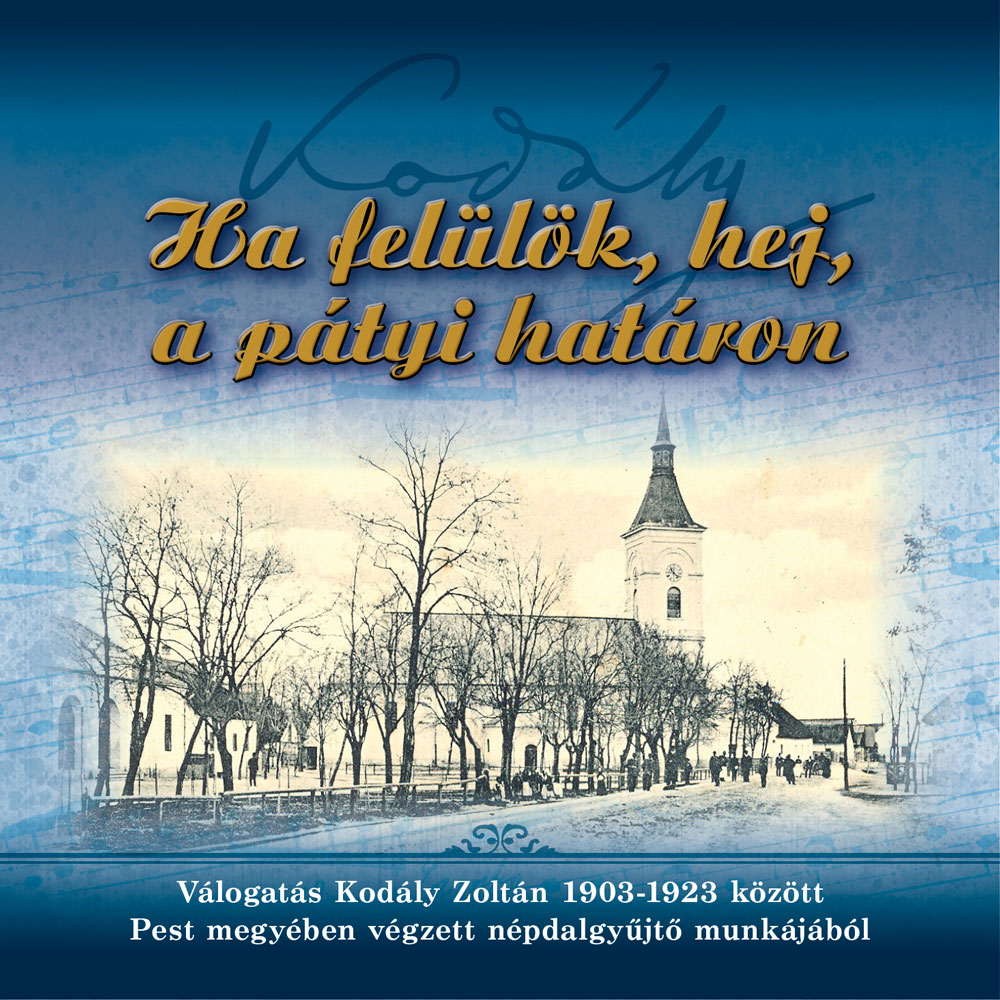
Ha felülök, hej, a pátyi határon
Ha felülök, hej, a pátyi határon
A selection from Zoltán Kodály’s folk song collection work in Pest County from 1903 to 1923
One of the special items on the list of Pest County cultural heritage protection publications and releases is the Kodály CD released in 2017. Kodály collected folk songs from thirty-seven informants in nine villages in Pest County. The oldest one is a folk song from Szigetszentmiklós notated as ‘circa 1890’, followed by his collections conducted from ‘Collegium Eötvös’ (in Gyón and Gomba) from the era right after the turn of the century. He continued his local researches and folk collections during 1922 and 1923, and recorded the locals favorite melodies in the communities of Dömsöd, Őrszentmiklós, Páty, Tinnye, Tök, and Váchartyán. Folk songs in both old style and new one, as well as lied-like folk songs can be heard on this album, and of the 100 folk songs the more articulated ones are released on this disc. The Pest County collection can be accessed in the Kodály Order on the homepage of MTA BTK Institute of Musicology, they are authoritative and can be accessed by anyone. With the assistance of Dr. Olga Szalay, research fellow at the Institute, any and all folk songs from Pest County collected by Zoltán Kodály have been identified. The 54 songs on the album shows how unique melodies Pest County might have had in the early 20th century, where the development of certain folk songs had been influenced by melodies originating from other cultures due to the earlier settlements.
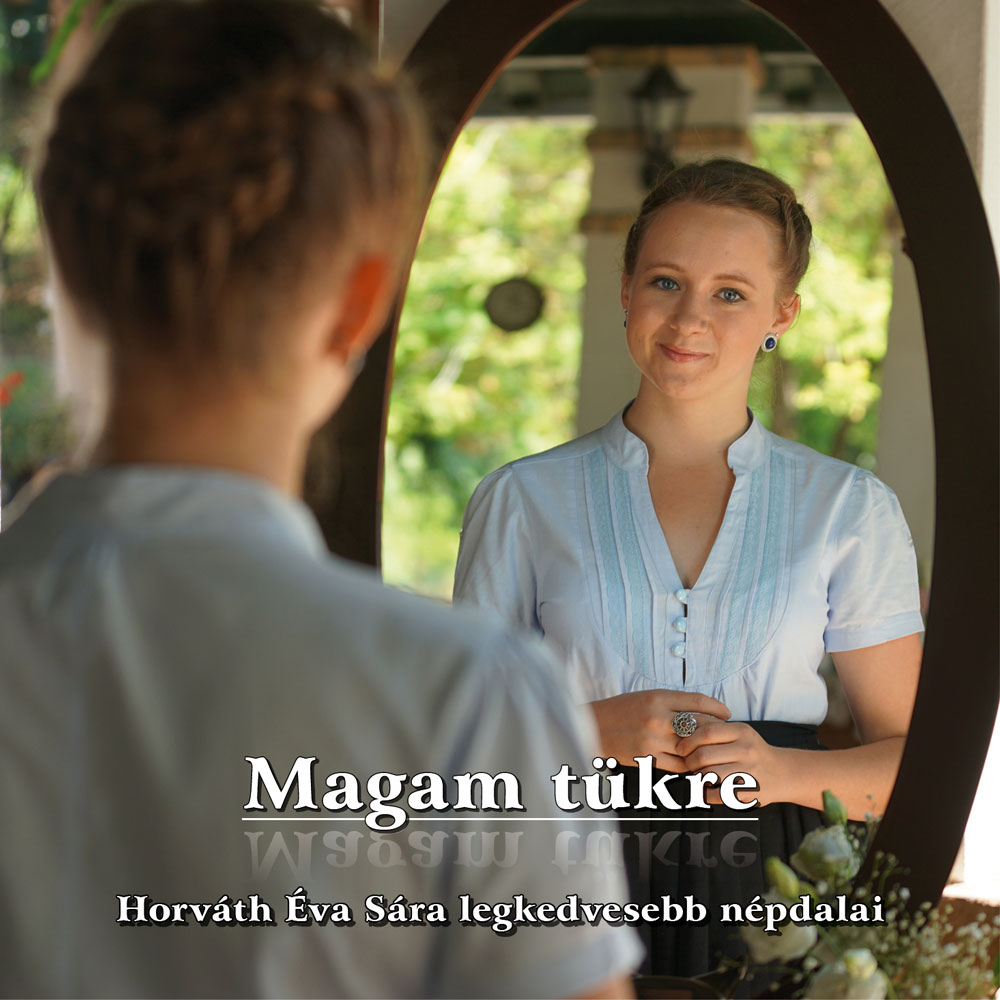
Éva Sára Horváth’s favorite folk songs
Éva Sára Horváth’s favorite folk songs
Entering adulthood, Éva Sára Horváth, a talented young folk singer recorded and released her very first solo album with the support of her hometown; she single-handedly compiled and arranged its pieces. The support she received from her hometown provided her a unique opportunity that would enable her to successfully launch her career compared to her contemporaries. The beautiful melodies and musical blocks represent various areas of the Carpathian Basin, all of which are accompanied by József Terék and Friends. The young folk singer was once a student of the band leader and Mihály Pál, respectively, at Földváry Miklós Alapfokú Művészeti Iskola (Art School), Tápiószentmárton. Concurrently with the release of the album, Éva Sára Horváth joined the band as a folk vocalsist at several events in Hungary and on the band’s folk albums, respectively.
The love of folk dance, folk music and folks songs have played a crucial role in her life since her childhood. All listeners will quite likely share this feeling with her when listening to Évi’s first solo album.
The album was released by Szivárvány Alapítvány, Tápiószentmárton in 2016.

Folk songs from Hévízgyörk
Folk songs from Hévízgyörk
The most beautiful authentic folk songs of Hévízgyörk are compiled in the cultural heritage album published not a long ago. The CD is the first of its kind in the region along Galga River, and it exclusively intends to popularize and bequeath the own local values of the communities. Finding folk songs and conducting scientific collection of the folk songs in Hévízgyörk in the 1970s was one of the first great undertakings by Dr. Katalin Lázár, research fellow at the MTA BTK Institute of Musicology. As a result of her work, nearly 500 folk songs were recorded and notated upon the then-current, previous and subsequent researches – of these songs the more articulated ones were selected as typical songs from Hévízgyörk. Local informants still live in the community in great numbers, so they also made their contribution to the album as the members of the women’s choir.
The album was released by Hévízgyörki Asszonykórus Népművészeti Egyesület in 2016.

Slovak folk songs from the Tapio region
Slovak folk songs from the Tapio region
The 14h stage of the project to protect the cultural heritage and values of the Tápió region was the recording and release of the CD containing Slovak folk songs. Large swaths of land in the region were partly depopulated and became uninhabited during the Turkish occupation of the nation. Due to the local resettlement projects, many new settlers arrived from Upper Hungary and other parts of the present-day Slovakia. They brought along with them their peculiar language and integrated into the everyday lives of the local populace, but their mother tongue, however, did not develop any further and conserved its archaic nature of the era of their settlement. All the informants used it this way and sang in this way. Unfortunately, the last informants rarely leave their homes these days and do not join communities due to their age, still they preserve those values that can be listened to on this present disc. Several songs have their Hungarian versions, and there are some so-called Hungarian-Slovak folk songs with dual language use blended sometimes in the lyrics.
The Slovak folk songs are not assorted into categories on the disc. It contains all the materials that were discovered during the years of research. The collections were carried out by Mihály Sztodola in Bénye in 1969 and 1971, Katalin Lázár in Sülysáp in 1981, Mrs. István Trefák née Klára Herceg in Mende in 1983, József Terék in Mende between 2009 and 2014 and Mrs. Pál Szabó née Katalin Zemen and Mrs. János Németh née Erzsébet Bugyi in Sülysáp in 2013. Dr. Katalin Király, Director of The Slovak Institute of Budapest also conducted some research in Mende in 2014, and she is the reviewer of the material at the same time.
The songs are all original and are recorded and released without changes. The material was released by Összefogás Sülysápért Egyesület in 2015.
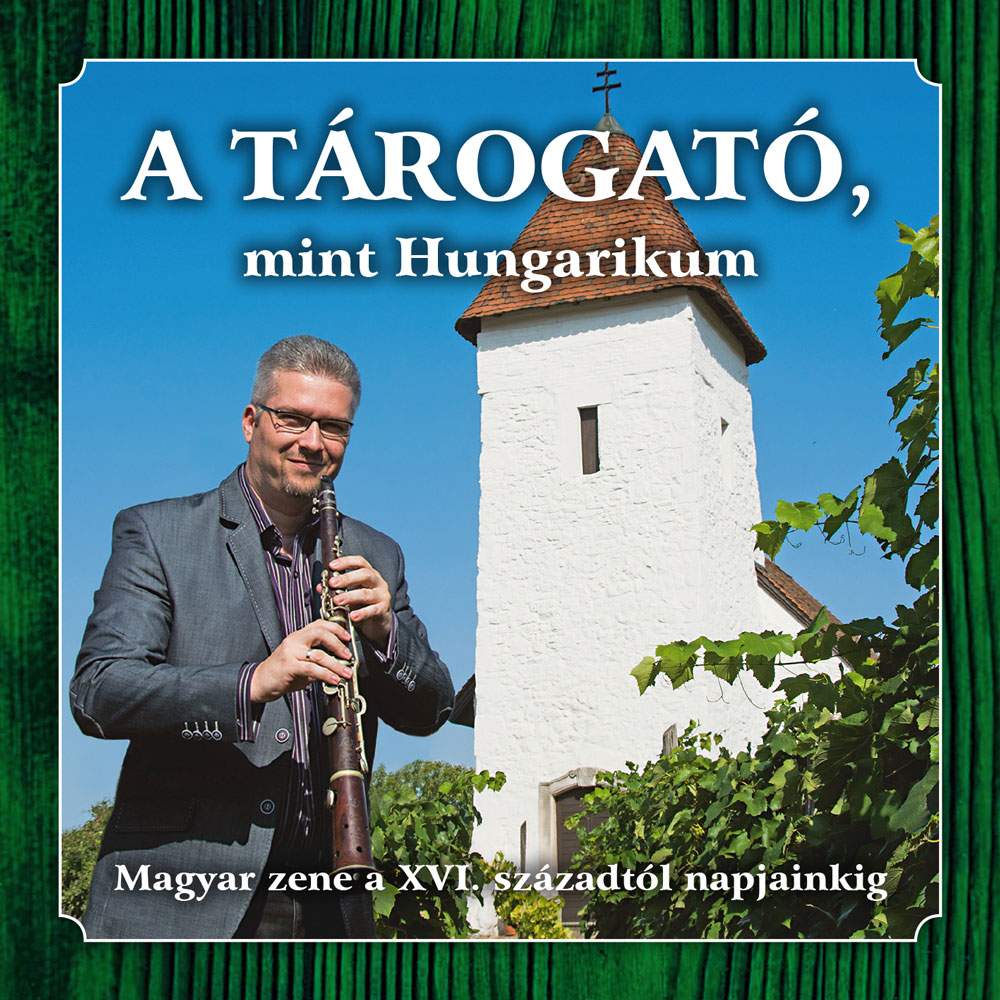
Hungarian music from the 16th century to present
Hungarian music from the 16th century to present
In December 2014, the musical instrument ‘tárogató’ (taragot) was officially recognized as a Hungaricum, it being one of the main symbols of Hungary and has been one of its typical musical instruments for centuries. Although its present form was only developed around the end of the 19th century (reformtárogató), due to the efforts of József Schunda Venczel and János Stowasser, it had played an important role prior to that since the time of Prince Rákóczi. Its characteristic sound cannot be mistaken for other instruments and is easy to recognize. The purpose of the reform was that it should take its rightful place in symphonic orchestras, therefore the instruments were developed in various sizes and tuning. Unfortunately, this initiative failed, and most of the instruments were destroyed during the course of centuries, however, due to the new initiatives, tárogató is taking a central role again, back to its former glory. The CD contains classical music, authentic Hungarian folk music, ‘nóta’ pieces, gypsy music, ‘verbunkos’ (verbunks), own compositions, and jazz music alike; beautiful and fabulous Hungarian melodies from the late 1500s to present are contained on the disc. The tárogató plays a central role in each piece as a lead instrument of the band. The versatility and usefulness of the musical instrument is presented by this CD, whose sole aim is to enhance the reputation and show the versatility of tárogató throughout various different musical styles and genres.
One own-composed piece on the CD was performed at the finals of UK Songwriting Contest in instrumental category in 2016.
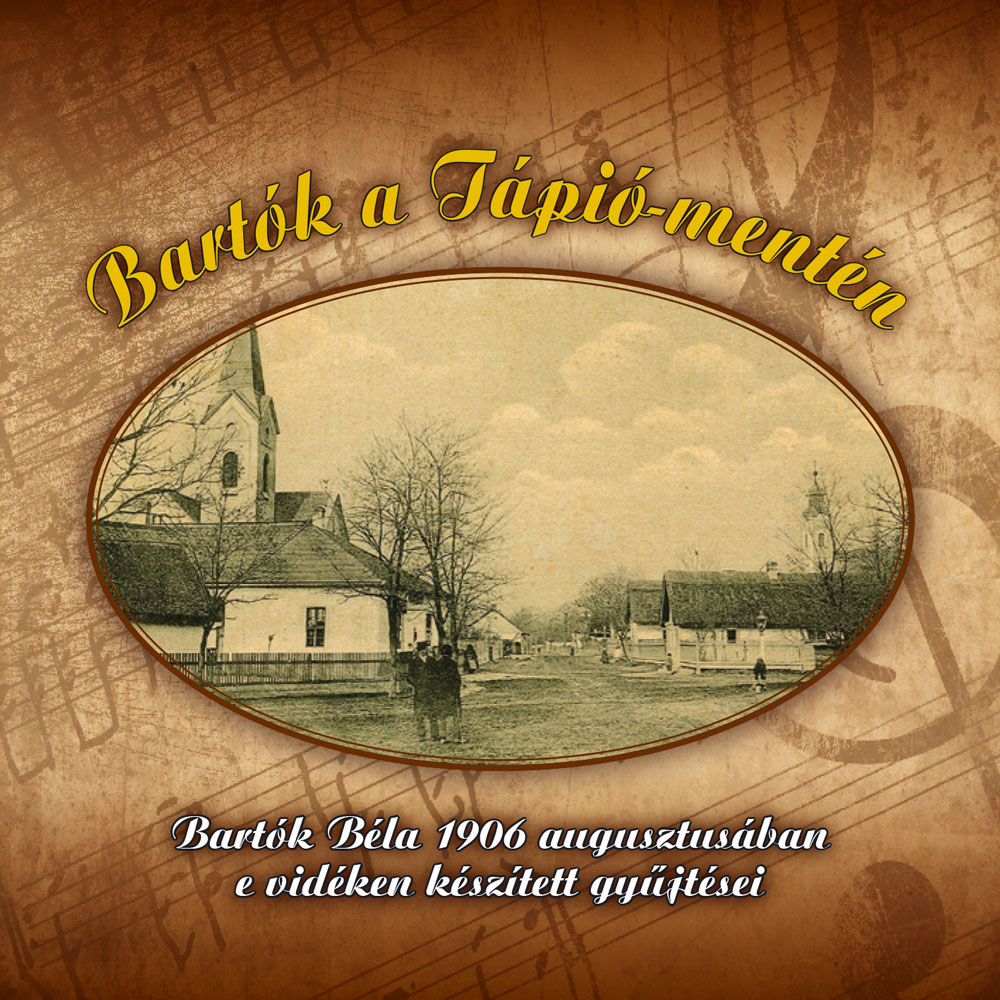
Regional collections by Béla Bartók from August 1906
Regional collections by Béla Bartók from August 1906
The 9th stage of the project to protect the cultural heritage and values of the Tápió region was the recording and release of the CD containing and summarizing the work of Béla Bartók conducted in the Tápió region. In August 1906 Béla Bartók was a guest and spent 10 days in Tápiószele upon the invitation of one of his students at the Academy of Music. It was presumably during this time that he made those notations whose original sheets can now be accessed by anyone at the archives of MTA BTK Institute of Musicology and the Museum of Ethnography. Overall 50 folk songs were recorded, which can be broken down as follows:
- Tápiószele 35
- Nagykáta 11
- Kóka 3
- Tápiószecső 1
The names of the informants are unknown, but according to their own reports, some of the local songs they sang had only been known for some years, and there were songs from the neighboring villages that they sang as if they were their own.
The majority of the folk songs is relatively new, and they contain quite a few strongly lied-like ones, which are released on the disc in their original versions only in respect to the collector.
Due to the released material, we can learn what melodies were typical of the Tápió region in the early 20th century, and also how local people expressed their feelings in ‘nóta’, folk songs, and folk-like melodies.
The material was released by Szivárvány Alapítvány, Tápiószentmárton in 2014.

Folk songs from Tápiószecső
Folk songs from Tápiószecső
The 9th stage of the project to protect the cultural heritage and values of the Tápió region was the recording and release of the CD containing folk songs from Tápiószecső. The very first folk song collection as regards Tápiószecső was carried out in 1906 by Béla Bartók, who notated a ballad sung for him by a man “from Szecső” while Bartók was staying in Tura. Later in 1953 Péter Balla and Antal Békefi from the MTA Institute of Musicology Folk Music and Folk Dance Research visited the village and collected valuable local folk songs, parts of which can be accessed at the Collection of Hungarian Folk Music. In the same year Lajos Kálmán, Nándor Nagy, Ottó Oeller and Vajda József conducted academic researches here, followed by Mária Schöllner in 1954 and Mrs. Andor Szabó née Anna Szojka in 1956 and László Gulyás in 1959. Also in 1959, György Martin folk dance researcher took photographs and made sound recordings of the then-contemporary dances, folk music and gypsy music. In 1962, Bálint Sárosi conducted researches on laments and other local folk song values, respectively. In 1967, György Kerényi spent time here researching ballads. György Martin visited the village for the second time in 1978 making recordings to reflect on the changes in the previous 20 years. Katalin Lázár conducted academic research here in 1981 and later, in 2009, József Terék collected materials. Sándor Ofella, andragogy expert and founder of the local folk band, who first carried the word of this region to the nation, has played a significant role in preserving Tápiószecső’s folk song and folk art treasures representing unparalleled value.
As a result of all researches, several folk songs in old and new styles, children songs and children games, Gypsy songs, toasts, peddler’s songs, laments, ballads and commemorative folk songs were retrieved. Some of the recordings on the album are performed by the local informants accompanied by music, and there are also archive recordings. The compilations on the album represent the rich musical sound so typical of Tápiószecső in the 20th century, due to the local Gypsy musicians.
This album was published by Wass Albert Tápiómenti Kulturális Egyesület in 2014..

Folk songs from Sülysáp
Folk songs from Sülysáp
The 8th stage of the project to protect the cultural heritage and values of the Tápió region was the recording and release of the CD containing folk songs from Sülysáp. The first academic research was conducted in the village in 1954 by Mária Schnöller, who was later followed by Katalin Lázár, a research fellow at MTA BTK Institute for Musicology in 1981, and finally by József Terék in 2009. The research regarding the local Slovak folk songs was conducted in 2013 by Mrs. Pál Zemen née Katalin Szabó and Mrs. János Németh née Erzsébet Bugyi, respectively. Hungarian, Gypsy and Slovak folk songs were found, and they paint a coherent and intertwined picture of the then-contemporaneous folk song scene. Unfortunately, no recordings by bands of the era could be found, but locals could still remember the lineups of the gypsy bands and the ‘trubacs’ (brass band). What makes the informants’ materials unique is that the pieces are sung in an archaic Slovak language, which were brought by their forefathers hundreds of years ago and then passed onto them.
The material was recorded and released by Összefogás Sülysápért Egyesület in 2014.

The best folksongs from Tóalmás
The best folksongs from Tóalmás
The 4th stage of the project to protect the cultural heritage and values of the Tápió region was to produce the CD containing the folk songs from Tóalmás. The earlies researches were conducted in 1956 by Mrs. Dezső Szabó, who collected local lullabies. As a result of the efforts by János Tóth, additional local songs were also recorded in the same year. The most extensive and notable research works were carried out first by János Manga, folk song researcher in 1974, and later in 1975 by Ilona Borsai and Teréz Kapronyi. The informant was a singer from Tóalmás discovered by János Manga, who had previously heard her singing in Budapest. János Manga had been so fascinated by her songs that he later recorded nearly 200 songs performed by the informant, Mrs. József Szekeres née Erzsébet Tóth. Her recorded songs can still be accessed at the archives of MTA BTK Institute for Musicology and the Hungarian Heritage House, respectively. She also had several performances in the Hungarian Radio in 1975, her songs being exclusively from Tóalmás. In 2009, József Terék carried out his folk songs research activities in Tóalmás, and in Budapest he had the privilege to personally meet the then 87-year-old Mrs. Szekeres who remembered very fondly of the years she had spent living in Tóalmás, her ancestral village. She never forgot the folk songs she had learned from her parents and grandparents.
The CD contains songs by sharecroppers, military marches, harvest songs, love songs and many other pieces, among which Aunt Erzsi’s performances from 1974, and some of her additional recordings between 2009 and 2012, can also be listened to.
The CD was released by Tóalmásért Alapítvány in 2012.
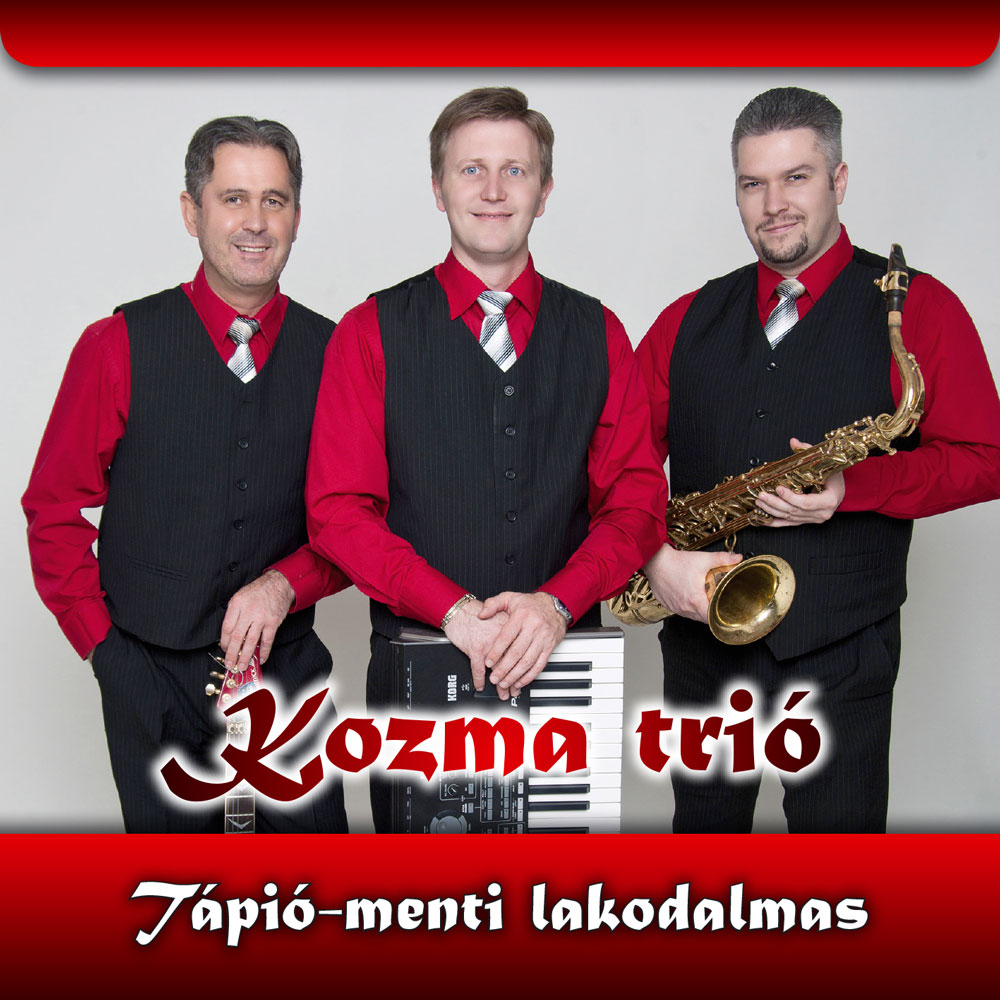
Wedding music from the Tapio region
Wedding music from the Tapio region
Kozma Trio, previously known and performing as Kozma-Galgóczi Duo, was formed in 2009. Prior to that, the two performers had worked as cruise ship musicians and entertainers together with other excellent fellow musicians. As a result of their friendship, and due to the similarities in their musical tastes, they established their own music party band. The trio firmly believes there is a demand for high quality live musical performances and they insist on the relevance of having high quality performances. The CD represents melodies most frequently heard at weddings in the Tápió region. Pieces of dance hall music, csárdás (czardas) pieces, foxtrots and gypsy music are performed on the CD, whose peculiar feature is that the tracks are divided into 20-minute-long ‘folksy music’ segments to better reproduce the atmosphere of weddings, which was, and is still, typical of the wedding music performed in the Tápió region. The CD contains generally known songs in a popular format.
The CD was self-published in 2012.

Folk songs from Kóka
Folk songs from Kóka
The 5th stage of the project to protect the cultural heritage and values of the Tápió region was the recording and release of the CD containing folk songs from Kóka. More than 100 years of folk song collection activity was finalized in Kóka, where the very first collector of folk songs was Béla Bartók in 1906. He collected three folk songs: a military march, a folk song related to no specific occasion, and one closely resembling to a lied-like piece (presumably a now long-forgotten composition by Pista Dankó). The copies of the sheet music can be accessed in the archives of the Museum of Ethnography. Two additional collectors continued this work: Mrs. Dezső Szabó in 1954 and Mária Schnöller in 1956 – both of them collected songs related to folk customs, songs sung on high days and holidays, as well as gypsy songs. These people were later followed in 1981 by Katalin Lázár, a research fellow at MTA BTK Institute for Musicology, and in 2009, by József Terék. The folk songs faithfully reflect the folk song scene of Kóka in the 20th century.
The publication of the material was made possible in 2012 with the help of the nonprofit (NPO) foundation, Biztonság, Esély a Kókaiakért Közhasznú Alapítvány.
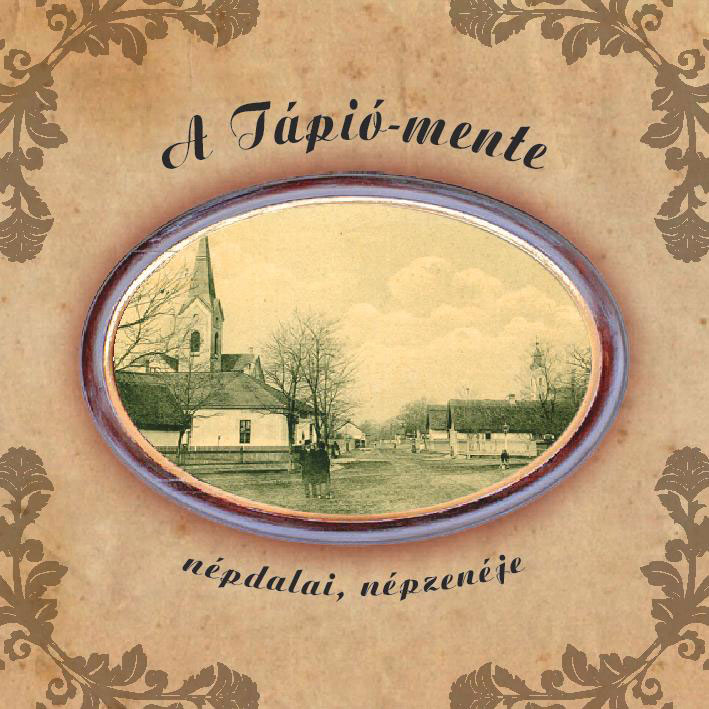
Folk songs and folk music from the Tápió region; Double CD
Folk songs and folk music from the Tápió region; Double CD
The 4th stage of the project to protect the cultural heritage and values of the Tápió region was the release of this material intending to showcase the folk song and folk music values of the 21 settlements. We enlisted the help and contribution of 36 other performers (among the recordings are 2 archive recordings), and working together made a dream came true, that is to collect previously unknown valuable pieces of folk songs and folk music from the Tápió region. Even though the hard research work of the 34 collectors of folk music as well as the values left to us by nearly 600 musicians identified during some one hundred years cannot entirely be reproduced, this work still provides a general overview for everyone wishing to have an insight into the unparalleled abundance of folk music and folk songs this region offers. In 28 various arrangements on this CD, one can find archive recordings by singers who have since then passed away, songs by gypsy bands, songs by regional informants, and other folklore values of the past 108 years performed in Hungarian, Slovakian and Gypsy languages. Unfortunately, many informants who worked on this project have since then passed away, and their numbers are decreasing day by day, but maybe we have managed to save the values they represented, be it in the last minute.
This piece was released in 2012 by Szivárvány Alapítvány, Tápiószentmárton.

The long way - Piece's of my life
The long way - Piece's of my life
There comes a time in every musician’s life when he wants to convey their feelings the way words cannot describe, so they turn to writing. These compositions represent meetings, friends, happiness, pain, love, loneliness, disappointment, mystique, travels, concerts and many other feelings. The performer’s road is unique to all performers, and it is one that performers have to walk all alone. This work is the first album, an excerpt from an autobiographical series, whose tracks were written in the span of 8 years between 2003 and 2011.
Here, the characteristic features of one’s own compositions are that there’s an ever-present unique musical style alongside the Hungarian harmonies, which features develop overtime with every musician and composer. This particular style draws inspiration and is uniquely blended from classical music, jazz, contemporary music as well as Hungarian motifs. Many pieces were selected for the semi-finals or the finals in instrumental category at both International Songwriting Competition, and UK Songwriting Contest.
This piece was self-published in 2011.

The best folksongs from Nagykáta
The best folksongs from Nagykáta
The 3rd stage of the project to protect the cultural heritage and values of the Tápió region was to produce the CD containing the folk music and folk songs from Nagykáta. Béla Bartók made notations of 11 songs during his trip to Nagykáta in August 1906, which notations can be accessed in the databases and archives of the Museum of Ethnography and MTA BTK Institute for Musicology alike. Unfortunately, no further collection activities, which could be verified from the national databases, were carried out in Nagykáta in the 20th century, however in 2009, József Terék visited the last remaining local informants, singers and musicians alike. As a result, the CD summarizing the settlement’s folk song and folk dance values could be recorded.
The album was released by the Municipality of the Town of Nagykáta in 2011.

The best folksongs from Tápiószentmárton
The best folksongs from Tápiószentmárton
The 2nd stage of the project to protect the cultural heritage and values of the Tápió region was to create the CD containing folk music and folk songs from Tápiószentmárton. The work of people conducting musical research as well as locals collecting songs served as the basis of the album. In 1959, Géza Paulovics from the Hungarian Academy of Sciences, Department of Folk Music and Folk Dance Research conducted his research here, followed by Katalin Lázár, research fellow at MTA BTK Institute for Musicology in 1981. In response to the call for research by the Museum of Ethnology, János Tóth conducted his research in 1982 by collecting and compiling materials of excelling value from the last local shepherd, József Koncsik – this work was later followed by József Terék’s folk song collection activity in 2009. Due to the helpfulness of the last remaining local informants it became possible to identify the folk song values still in existence today, and by carefully compiling them together with the previously collected works, the own folk song CD album of Tápiószentmáron could finally be achieved.
The album was published in 2010 by Szivárvány Alapítvány, Tápiószentmárton.

Kozma Tamás és Terék József
Kozma Tamás és Terék József
On New Year’s Eve in 2008, Tamás Kozma and József Terék started their cooperation in Canada after a show at the Hungarian Hall in Calgary. Both of them play predominant roles in their professions in Hungary. Tamás performed aboard cruisers in the Caribbean, he also performed at ‘Hungarian Houses’ in North America, and in his homeland he frequently accompanies outstanding ‘nóta’ singers on piano. The CD recently published by the two young talents intends to amalgamate their musical styles. The tracks contain ‘nótas’, evergreen classic hits, tárogató (Turkish pipe), clarinet, and saxophone pieces. The duo is very popular with people attending Hungarian balls, and they provide quality musical entertainment for all generations -- additionally, they always play live music to honor the attendees of the events both in Hungary and outside the borders. Their Hungaricum concerts are a success everywhere, and the below album is their first compilation.
The album was self-published in 2010.

Lányok, lányok, ti szelei lányok (Béla Bartók’s compliation in Tápiószele in 1906)
Lányok, lányok, ti szelei lányok (Béla Bartók’s compliation in Tápiószele in 1906)
The 1st stage of the project to protect the cultural heritage and values of the Tápió region was the publication of the CD containing the folk music and folk songs recorded in Tápiószele. Béla Bartók visited one his Academy of Music students in Tápiószele and stayed here for 10 days in August 1906. During this period of time he recorded 35 folk songs mostly by notations. The majority of the songs were the new style folk songs, the notations of which can be accessed in the archives of the Museum of Ethnography and MTA BTK Institute for Musicology. Most of the performers were young girls, according to whom some of the local songs were new that had only been known for some years. Some songs are from Tápiógyörgye, but there is one better known from Jánoshida. Considering the reputation of the collector, all songs can be found on the album, without any changes made, ranging from old-style folk songs to lied-like folk songs. The album provides a glimpse into the then-musical harmonies and sounds typical of the region around the early 20th century showing similarities to their contemporaries from Újszász to Tura or from Jászberény to Rákoskeresztúr.
The album was released by Blaskovich Múzeum Baráti Köre in Tápiószele in 2009.

The Five Virtuoses
The Five Virtuoses
The Five Virtuosos was formed in 2008 with the goal to establish a band to blend the own styles of Hungarian, Slovak and Gypsy musicians into a colorful fusion of sounds in which the admixture of styles would result in a band with a unique sound and concert material. The idea soon became a success, (even though its name changed in the meantime, the band now being known as József Terék and Friends), as the band embarked on a musical journey not previously expected, largely due to the publication of this material. Now we know that releasing the album has become the landmark in the band’s career; with this album we proved what we had previously thought, that is any genre may match one another during performances and no matter what others may think or say or how much they may oppose it, our music should sound exactly the way we like it. Playing music freely is given to anyone – all you need to do is to dare stand for yourselves. One can find unique adaptations of folk songs and our own compositions on the album, many of which had already been selected for the finals in instrumental category both at International Songwriting Competition and UK Songwriting Contest quite a few times.
The material was self-published in 2008.

